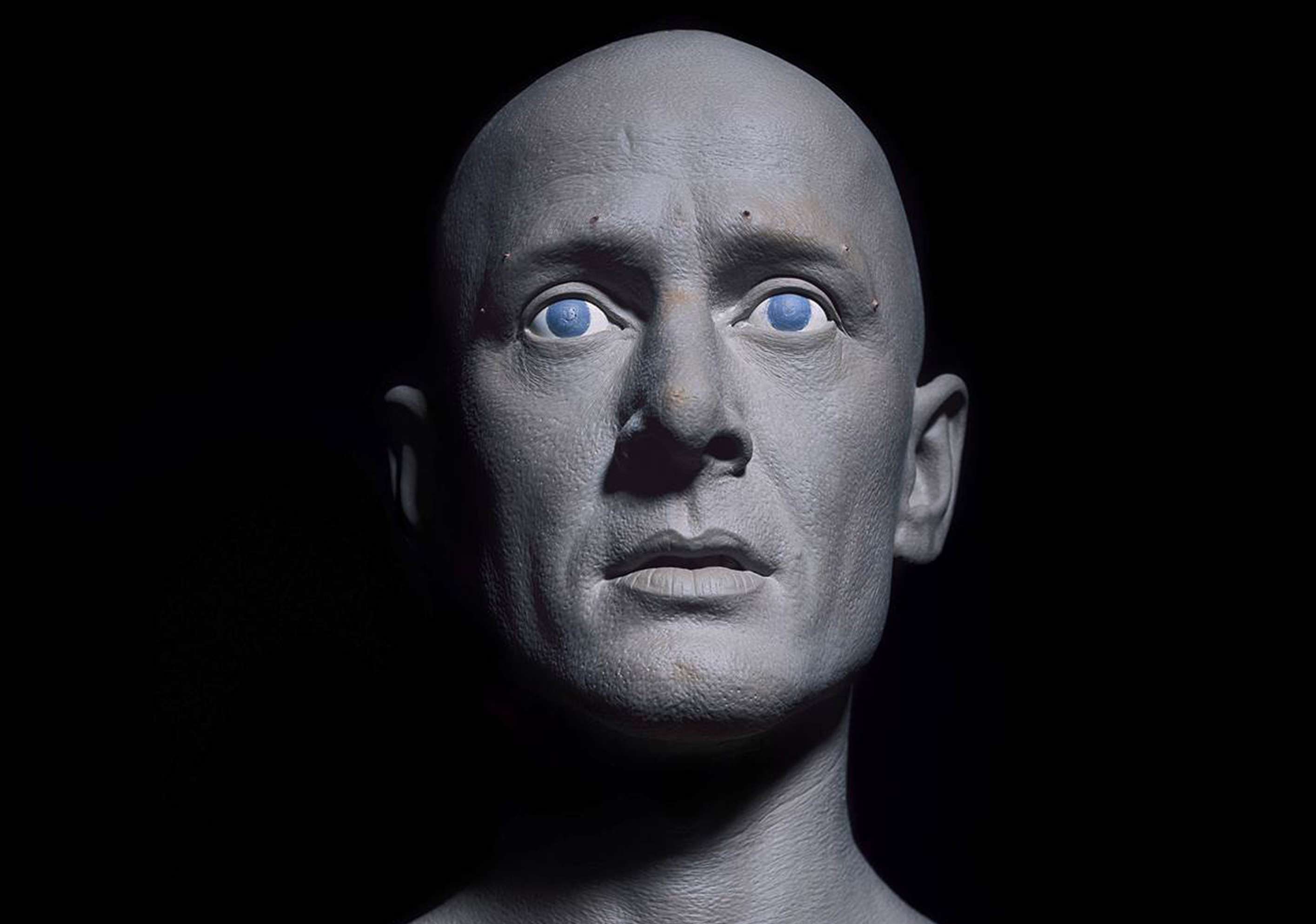Andreas Mühe (b. 1979 in Chemnitz) became internationally known through his examination of the German past and identity. His photographs, produced entirely with analogue technology, are often marked by ambivalence; an almost gloomy overtone, which points to the no longer visible but still perceptible consequences of German historiography. The carefully composed images suggest a certain kinship to theatre and staging. The proximity to acting, theatre and film can be inferred in part from his personal biography: His father was the well-known actor Ulrich Mühe; his mother is the renowned theatre director Annegret Hahn. These two personalities, along with other relatives, represent the protagonists in his new series of works conceived for an exhibition at Hamburger Bahnhof – Museum für Gegenwart – Berlin. In two large-scale photographic family portraits Mühe brings together living and no longer living members of his family. Working from photographs, he used a complex and laborious production process to have deceased family members replicated as strikingly lifelike sculptures.
- Duration of the Exhibition26. April 2019 - 11. August 2019
- VenueHamburger Bahnhof – Museum für Gegenwart – Berlin
- Websitewww.andreasmueheinberlin.de
The exhibition is made possible by the Freunde der Nationalgalerie and supported by Volkswagen Aktiengesellschaft.
This reveals a very personal analysis of the interrelationships within the Mühe family, the members of which – because of their work – also lead partially public lives. Behind the psychological, socially-charged aspects of the family portrait, an art-theoretical investigation is also taking place. Indeed, Mühe’s artistic process, which proceeds from photographic raw material, through three-dimensional reproduction as sculpture, and leads finally to a choreographed grouping with a photographic family portrait as its end result, makes the ambivalent nature of photography – which lies somewhere between truth and construct – blatantly clear. Personal histories, social and societal circumstances, and artistic tradition come together to create the portrait of a family in which both contemporary history and art history are deeply inscribed.

